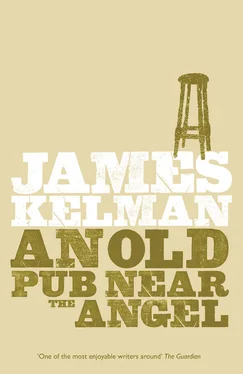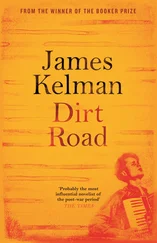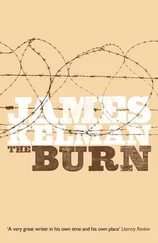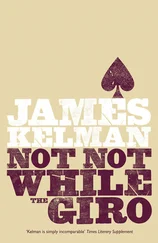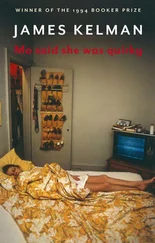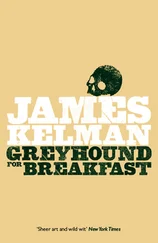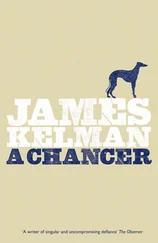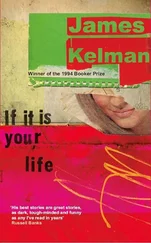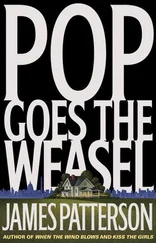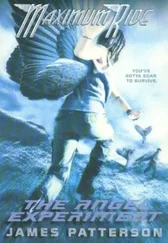James Kelman - An Old Pub Near the Angel
Здесь есть возможность читать онлайн «James Kelman - An Old Pub Near the Angel» весь текст электронной книги совершенно бесплатно (целиком полную версию без сокращений). В некоторых случаях можно слушать аудио, скачать через торрент в формате fb2 и присутствует краткое содержание. Издательство: Birlinn Ltd, Жанр: Современная проза, на английском языке. Описание произведения, (предисловие) а так же отзывы посетителей доступны на портале библиотеки ЛибКат.
- Название:An Old Pub Near the Angel
- Автор:
- Издательство:Birlinn Ltd
- Жанр:
- Год:неизвестен
- ISBN:нет данных
- Рейтинг книги:4 / 5. Голосов: 1
-
Избранное:Добавить в избранное
- Отзывы:
-
Ваша оценка:
- 80
- 1
- 2
- 3
- 4
- 5
An Old Pub Near the Angel: краткое содержание, описание и аннотация
Предлагаем к чтению аннотацию, описание, краткое содержание или предисловие (зависит от того, что написал сам автор книги «An Old Pub Near the Angel»). Если вы не нашли необходимую информацию о книге — напишите в комментариях, мы постараемся отыскать её.
was published and the rest is history. The US edition has never been out of print.
An Old Pub Near the Angel — читать онлайн бесплатно полную книгу (весь текст) целиком
Ниже представлен текст книги, разбитый по страницам. Система сохранения места последней прочитанной страницы, позволяет с удобством читать онлайн бесплатно книгу «An Old Pub Near the Angel», без необходимости каждый раз заново искать на чём Вы остановились. Поставьте закладку, и сможете в любой момент перейти на страницу, на которой закончили чтение.
Интервал:
Закладка:
Others were less impressed by ‘Nice to be Nice’. Some made no attempt to read it. Of course the language made it difficult. But so what? That just meant it was a difficult story. It was not a structural fault. I did not care if somebody did not read it. But I got weary with explanations. Read it or not, but there it is.
Some who knew Tom Leonard’s work assumed I was familiar with his Six Glasgow Poems , published in 1969. These poems are brilliant. But why would people think I knew them? If I had, it would have affected my work, and that particular story would have been altered fundamentally. Tom’s language was pared to the minimum, and his precision even then, at the age of 21 or 22, was all that any artist could have sought.
There was a particular response to ‘Nice to be Nice’ that irritated me, as though the struggle for the means of expression was definitive, that the battle had been won and the war was over. According to that argument, the primary concern is the means of expression: the thing expressed is irrelevant. Forget about the primacy of this story and that story and that one over there; this writer, that writer and the one over there. They admit the validity of the language, they do not want the poetry and stories. The language exists and people exist who use it, okay, but do not force them down our throat!
In ‘Nice to be Nice’ the story is narrated in the first person by the central character. I was concerned about other characters. There are four in all: the narrator; his old pal Erchie; the young fellow who exploits him; and the single mother in danger of losing her home. In what sense could the ‘I-voice’ be defined as the central character? Only because he is telling the story. Each of the four characters would see it differently, each of the four characters had their own story, a different story. I started writing them, each as a first-person narrative. The shift in the language of each person was the most interesting factor. That subtlety, the sophistication of how human beings use language, is not possible for the elitist or racist for whom working-class existence may be an amorphous experiential mass, but if you hear one you hear them all, see one you see them all. During the Booker Prize controversy of 1994 much of the hostility directed at How Late It Was, How Late derived from the astounding proposition that the life of one working-class Glaswegian male is a subject worthy of art. I was used to the prejudice but the gleeful abandon with which some attacked my work took me by surprise. It never occurred to the literary mainstream that working-class males from Glasgow might be watching the programme or reading the newspaper.
Ultimately there was only one story, ‘Nice to be Nice’. I composed it as best I could. The other draft versions are in a bottom drawer someplace. But it was not my first story to appear in print. Glasgow University’s Extra-mural Department had its own little magazine, edited by Ann Karkalas, and she published ‘He knew him well’ in early 1972.
Ann is another hero. During that period in the early 1970s she fostered contemporary writing in Glasgow and elsewhere. She sought different ways to do it, extending the range of the Extra-mural Department. She employed part-time tutors like myself to lead Creative Writing groups. It was only two hours a week for maybe ten weeks but for an artist any money is crucial. And money you earn as a result of your labours as an artist, that is fucking well nigh unique; it is just such an exciting thing, a validation. You run and show your family the cheque. Ann Karkalas took it for granted that we could lead these groups, and maybe bring to them some crucial element of our own.
When that shipment of 200 books arrived myself and Marie thought about their distribution. We gave many to family and friends. Occasionally I charged somebody £1.50 or £2. My grannie paid the dough without a grumble.
I asked friends what to do with them. Sell or deposit them in bookshops was the response. I walked along Great Western Road with a pile. A newsagent near Kersland Street gave me a cheery grin. He accepted three copies on a sale-or-return basis. Perhaps they sold. I never went back to check. I managed to place a few more in local bookshops. I returned to see if they had sold but generally no one knew. I had to content myself with a gentlemanly nod, departing with self-respect intact.
Somebody suggested I take a few to Edinburgh bookshops. I wondered what to wear. Should I adopt the bohemian look or that of the ‘prosperous clerical worker’? Unfortunately, in those days I wore my hair long and had a beard so the ‘prosperous clerical worker’ image was tricky. I walked the middle path. I donned a duffle coat but wore a neat pair of trousers rather than jeans. I had discovered that clothes can be a problem for writers.
Years later I was with Tom Leonard and Alasdair Gray arriving to do a reading somewhere, and each of us wore a herringbone-patterned Harris Tweed sports jacket. We were not taken aback. I think Alasdair said, Aha!
In the mid 1970s I was guest speaker (recommended by Ann Karkalas) at a writers’ workshop on the Ayrshire coast, on my way to pick up two hours’ work plus expenses. I guessed it would be a middle-class set-up and adopted the ‘prosperous clerical worker’ approach: dark overcoat, shirt and tie and the usual neat trousers. Months before I had cut off the long hair and shaved the beard off completely, so I looked well scrubbed. I also carried a bag. A bag! It might even have been a briefcase! Fuck sake man. Unfortunately the Bhoys were playing Ayr United away that evening in a cup tie, and the train was packed full of green-and-whites. I had to stand there. A couple of the Celtic fans noticed me; one pointed and shouted, Look at Elmer Fudd!
Fucking mortified man, I did not know where to look.
But he was quite right.
So, back in 1973, still with all the hair, I had donned the duffle coat and journeyed to Edinburgh with a bagful of An Old Pub Near the Angel . I walked to the first place on the list, up the hill from Waverley Station, James Thin’s bookshop on South Bridge. Inside I wandered by the shelves, composing myself, bagful of books at the ready. I saw a smallish dome-headed personage who seemed to work in the place. He observed me. Maybe I was a book shoplifter. In those days I was a book shoplifter. If I had been engaged in that pursuit then he would not have spotted me.
I approached him. I asked about the set-up. Did a writer chap seek out the manager or what? I indicated my bag. He was wary to the point of fear and pointed towards the woman at the cashier desk. So I asked her. Oh, you should see Mister Thin, she said, pointing back the way. It was the same wee baldy guy. He was watching me. Now he backed away. I left the premises, for the next train back to Glasgow.
None of the people I knew earned much at all from writing — Aonghas MacNeacail, Tom Leonard, Liz Lochhead, Donald Saunders, Anne Stevenson, Alasdair Gray. Little bits of tutoring and the occasional paid reading, that was about it.
Mary Gray Hughes advised me, ‘If you want to earn money, don’t be a writer, at least not a “real writer”. . [real] writing has a lot of grimness in it.’ She never earned a thing from writing either. Like the rest of us she occasionally led Creative Writing classes or placed a story in a literary journal. Twenty years passed until our next meeting, which was in Chicago in 1995. We corresponded throughout the years, until her death from cancer in 1999. Constance Hunting published a posthumous collection of her stories in 2002 ( Cora’s Seduction, and Other Stories , Puckerbrush Press).
Mary Gray’s father was Hart Stilwell, a radical Texan journalist and fiction writer from the first half of last century. When I taught a graduate class in Creative Writing in Austin, it took place in the old home of J. Frank Dobie, a legendary Texan man of letters (who corresponded with R.B. Cunninghame Graham). Hart Stillwell had studied at the University of Texas in Austin in the early 1920s. He knew J. Frank Dobie and visited his home on occasion. It was a rich coincidence for myself.
Читать дальшеИнтервал:
Закладка:
Похожие книги на «An Old Pub Near the Angel»
Представляем Вашему вниманию похожие книги на «An Old Pub Near the Angel» списком для выбора. Мы отобрали схожую по названию и смыслу литературу в надежде предоставить читателям больше вариантов отыскать новые, интересные, ещё непрочитанные произведения.
Обсуждение, отзывы о книге «An Old Pub Near the Angel» и просто собственные мнения читателей. Оставьте ваши комментарии, напишите, что Вы думаете о произведении, его смысле или главных героях. Укажите что конкретно понравилось, а что нет, и почему Вы так считаете.
